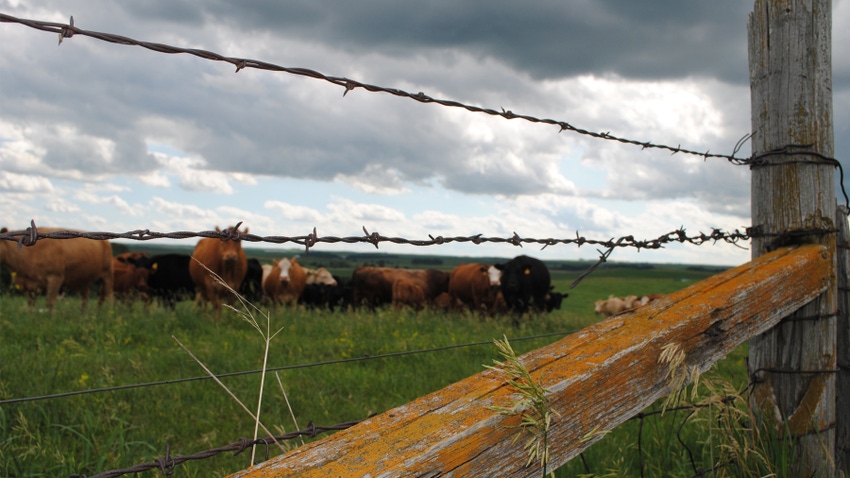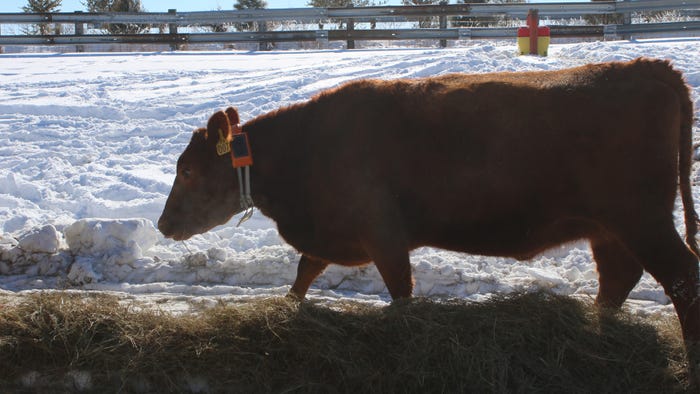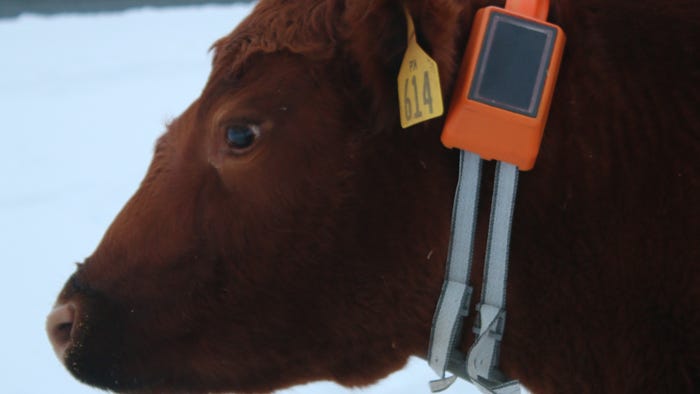
There are not too many words that strike fear into a cow-calf producer more than the phrase, “Cows are out.”
Monitoring and fixing fence is just part of the job when you raise cows and calves, but it can be a cumbersome, time-consuming and expensive aspect of the operation.
That’s where Jack Keating comes in. His new business, Corral Technologies, was born on the Keating Family Ranch in Holt County, Neb., where Keating recognized how inefficient the job of fixing fence was.
In May, the company is ready to roll out its revolutionary design — using wearable collars to establish virtual fencing for cattle — with 2,000 units becoming available commercially to producers.
Tough job
“Growing up on our family’s ranch along the Niobrara River and raising cows, I had a lot of experience fixing fence,” Keating says. “I began to realize how inefficient it is, and I initially had the idea of just getting rid of the fencing altogether. It was my least favorite job on the ranch.”
After high school, Keating attended the University of Nebraska-Lincoln studying mechanical engineering. During his college years, the business model for Corral Technologies began to form. With the cost of satellite connectivity and cloud-based software becoming more affordable, the concept of wearable collars to track cows, move them remotely and create virtual “fence” boundaries where they are desired became possible.
“Now, we can move cows around remotely with this device,” Keating explains. “We can cross-fence and carry more cows per acre.”

TESTING THEM OUT: Jack Keating has been testing new collars for his cows on the Keating Ranch in Holt County, Neb.
At first, the experiment started with electronic dog collars, but it has evolved into the company’s own wearable devices for cows. “Initially, it was invisible fence for cows instead of dogs,” he says. “There is no underground fence. We started with two dog collars. As we wanted the animal to turn left or right, we initiated a shock or sound on either side. We found out that it works.”
After developing circuit components and a circuit board for the devices, Keating decided that the concept was manufacturable and could help producers improve operation efficiency.
“Each collar has two solar panels on it, with two years of life,” Keating explains. “There is no base station, so the rancher doesn’t have to worry about anything else. You put the collars on the animals. We’re not adding more work or concerns.”
From the collar, ranchers can track the location of cows, and use the data gained from the collars to get grazing analytics that can produce a map where the animal has grazed and where it hasn’t, so producers can make decisions based on that information.
No base station
There are several other companies doing virtual fencing, but the big difference for Corral Technologies, Keating says, is that there is no base station with their system.
“It will work for small operations as well,” he says. “It takes no time to move cows constantly. And this system helps with record keeping, grazing planning. You have the EID tag, just tap it on the screen and pull up the cow’s data at the chute when you are running her through, if you like.”

SOLAR POWER: Two solar cells power the high-tech collars.
Because of potential connectivity issues in remote locations, the system has offline capabilities. Even with no cell service, you can still connect to the collars within 100 yards, Keating says, as long as you connect to cell service once a day.
The testing for the collars and the new system of virtual fencing has been initiated at the Keating Ranch. “We’ve noticed a herd mentality,” Keating says. “So, having more devices out in the herd increases the effectiveness. We’ve seen a few rogue cows, but not a whole lot.”
The recommendation is for 75% of the cows in the herd to have collars. Calves may move between virtual fences, but keeping the cows inside the fence lines established is the priority. The system is set up for virtual cross-fencing and interior fences, with the continued need for a physical perimeter fence in most circumstances, Keating explains.
While the collar experience is different for every cow in the herd, usually after about five days, they are completely collar trained.
“Even if they do get out of the virtual fence in remote areas, there are other cows around, and you will be able to tell which direction the cow is pointed,” Keating says. “Through directional stimulation, you can keep the cow contained and point her back toward the pasture.”
The collars will cost about $120 per collar per year, Keating adds.
Learn more at corraltech.com.
About the Author(s)
You May Also Like






